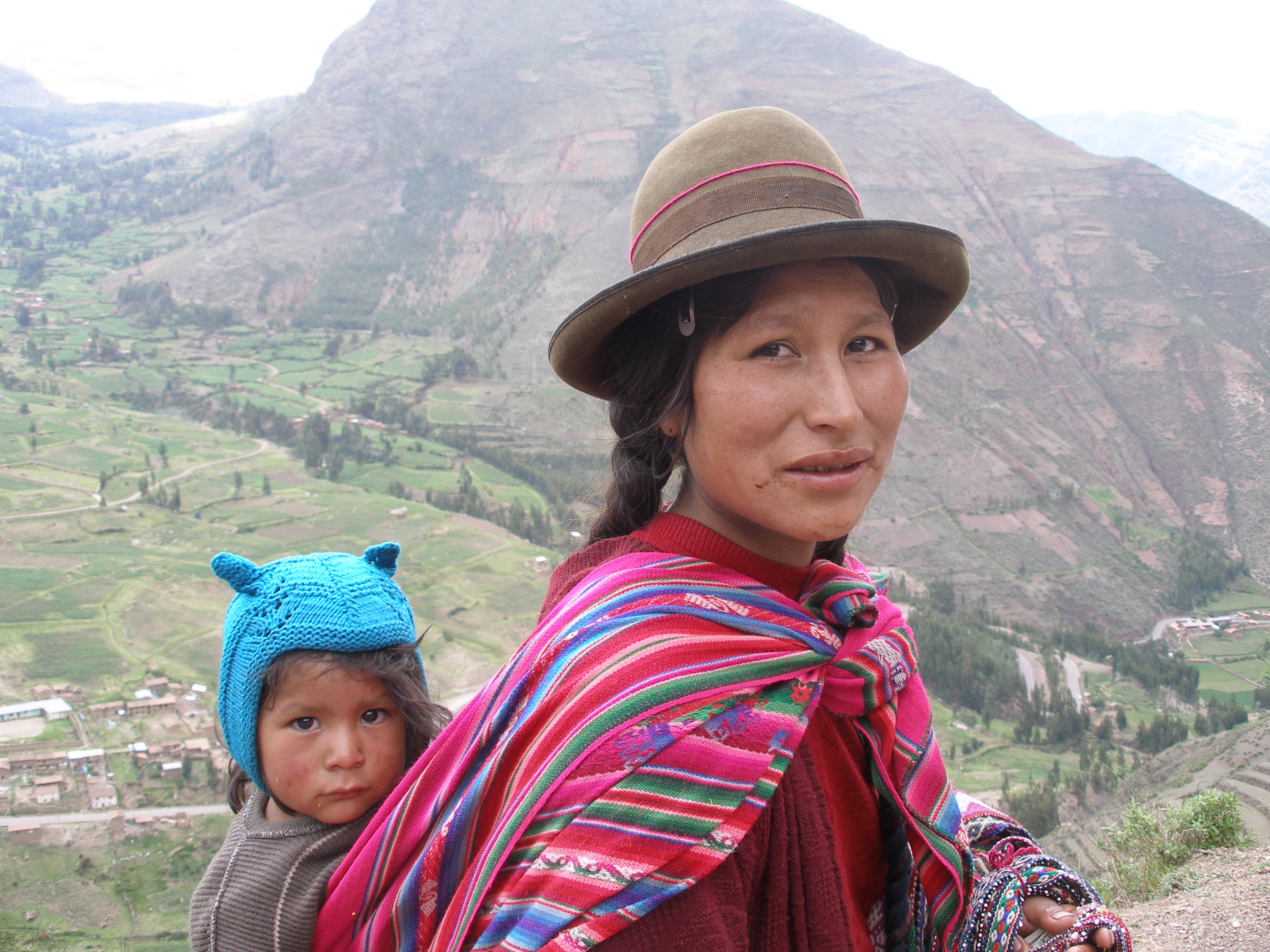 |
| Quechua woman and child, Andes, Peru |
• You can have 13 consonants in a row! The Salishian language Nuxalk (pron. nuhalk), spoken in British Columbia in Canada, has the word clhp'xwlhtlhplhhskwts', which means "then he had had in his possession a bunchberry plant". Do tell us: how do you pronounce that word?! ("Nuxalk", Wikipedia)
• You don't say "my left arm". Instead, you say "my north / south / east / or west arm", depending on your actual orientation! Speakers Warlpiri in Central Australia use the cardinal directions; an absolute frame of reference. (Levinson and Wilkins, 2006)
• You must use one of 10 genders! The Yuchi in Oklahoma, USA, use "six [genders] for Yuchi people (depending on kinship relationships to the speaker), one for non-Yuchis and animals, and three for inanimate objects (horizontal, vertical and round )"! (The Guardian, 2008)
Those are just three of the strange and wonderful (for me!) world-descriptions from the approximately 7000 languages of the world. And these are vanishing voices - we are making these Indigenous languages disappear! This article explores why this is happening, what we are losing, and one definite "must-do".
 |
| Half of the world speaks these 25 languages. Source: Terralingua.org |
All over the world, these small languages have been in contact with the larger ones around them. However, historically, rarely has this contact been peaceful. Speakers of big languages have come with modern weapons in search of slaves, natural resources, and land. Indigenous peoples who survived (many, many were killed) have had to abandon their language and culture (along with their land). This continues. Their children are forbidden to speak their languages in school, and the government and the courts do not speak their languages either. With no alternative, speakers of Indigenous languages shift to dominant languages. This is why the shift is not "voluntary". It is no wonder that of the 424 languages spoken in India (according to Ethnologue), 131 are "Endangered", that is, "it is no longer the norm for children to learn and use this language".
 |
| Places of high biodiversity are also places of high linguistic diversity. Source: Terralingua.org |
It's also an ethical question, is it not? Linguistic human rights are as important as other rights. And the freedom to practice one's own culture includes its languages. Plus it is also about education. Tons of research (as well as common sense!) tells us that children learn best in the language they know best. Depriving a child of that is cognitive violence! For society, the cost is twofold. One, repeated years, dropping out of school, and low economic productivity - a massive waste of resources! And two, poorly prepared citizens for democratic participation - perhaps an even more serious cost!
So what should we do? Many things need to be done, but clearly education has to be one of our starting points. Bringing mother tongues into education will make all education more effective. This will revitalize Indigenous languages as languages of modern knowledge. Meanwhile, their speakers will continue to take pride in their cultural heritage. However, in addition to learning in their own languages, children also need high-quality teaching in the other languages they need to know - the regional language and English, for example. This idea is at the core of Mother-Tongue Based Multilingual Education (Mohanty et al., 2009).
In itself, that proposal is not enough. The rights of Indigenous peoples need to be strengthened in many other domains as well. But whatever strategy society adopts, education should be among its main components. Only then will there be generations who will continue to marvel at these diverse ways of being human!
References
Levinson, S. C. and Wilkins, D. P. (eds.) 2006. Grammars of Space: Explorations in Cognitive Diversity. Cambridge. https://doi.org/10.1017/CBO9780511486753
Mohanty, A. K., Panda, M., Phillipson, R., Skutnabb-Kangas, T. (eds.) 2009. Multilingual Education for Social Justice: Globalising the Local. Hyderabad: Orient BlackSwan. https://orientblackswan.com/details?id=9788125036982
The Guardian, “Peter K Austin's top 10 endangered languages”. 27 August. https://www.theguardian.com/books/2008/aug/27/endangered.languages
Wikipedia. “Nuxalk”. https://en.wikipedia.org/wiki/Nuxalk_language#Syllables.